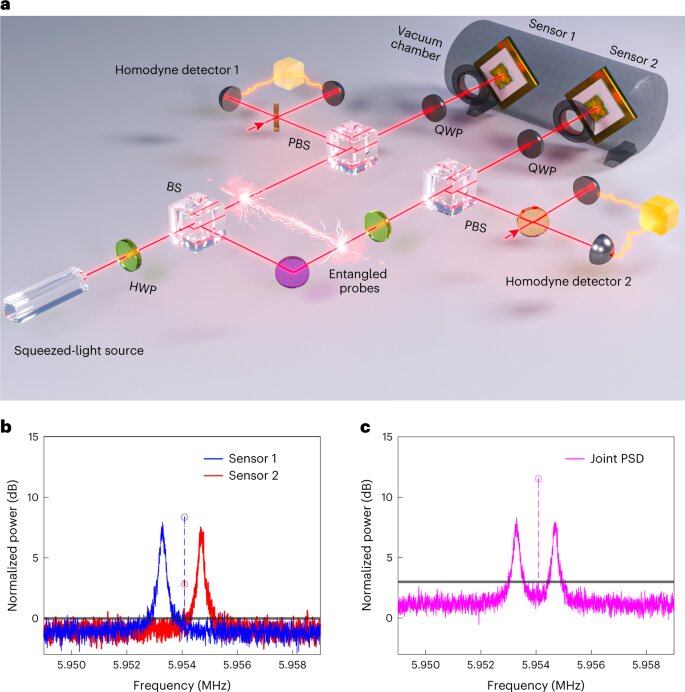Researchers at the University of Arizona have used quantum entanglement to enhance
Optomechanical sensors measure usinglight waves forces acting on a sensitive mechanical device, scientists explain. They are based on two synchronized laser beams that bounce off a sensor. Any movement changes the distance the light travels on its way to the detector. If the transducer is stationary, the two waves are perfectly aligned. But if the sensor is moving, they create an interference pattern.
In classical interferometric systems, thanThe further the light travels, the more accurate the system becomes. To ensure high precision in miniature optomechanical sensors, physicists used quantum entanglement.
Instead of splitting the light once toit bounced off a sensor and a mirror, they split each beam twice so that the light bounced off two sensors and two mirrors. The sensors used are membranes as thin as 100 nm, which move in response to very small forces.
 Scheme of the proposed installation. Image: Yi Xia et al., Nature Photonics
Scheme of the proposed installation. Image: Yi Xia et al., Nature Photonics
Doubling the sensors improves accuracy becausethe membranes must vibrate in sync with each other, but the entanglement adds an extra layer of coordination, the scientists note. They "squeezed" the laser beam. In quantum mechanical objects such as photons, there is a fundamental limit to how accurately the position and momentum of a particle can be known. Since photons are also waves, this is expressed in terms of the phase of the wave (where it is in its oscillation) and its amplitude (how much energy it carries).
The contraction redistributes the uncertainty so thatthe compressed component is known more accurately, while the anti-compressed component carries more uncertainty. We compressed the phase because that's what we needed to know for our measurement.
Yi Xia, study co-author
Since fluctuations in two entangled beamsare related, the errors in their phase measurements are correlated. As a result of the experiment, scientists obtained measurements that are 40% more accurate than with two non-entangled beams, and did it 60% faster. Calculations show that the accuracy and speed will increase in proportion to the number of sensors.
The developers note that such sensitivesensors can be used for inertial navigation on a planet that does not have GPS satellites, or inside a building when a person moves through different floors. In addition, they can be used to measure minimal gravitational perturbations associated with dark matter. The researchers will continue to work on miniaturizing the device so that it can fit into a device the size of a smartphone.
Read more:
New solar cell breaks world efficiency record
It turned out what is happening with the documents of Leonardo da Vinci: they began to change
Listen to the sound of solar plasma as it hits the Earth
On the cover: an artistic illustration of an ultra-precise sensor based on an array of membranes and entangled laser beams. Image: University of Michigan